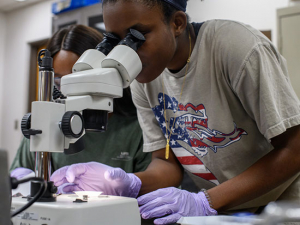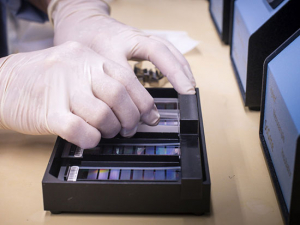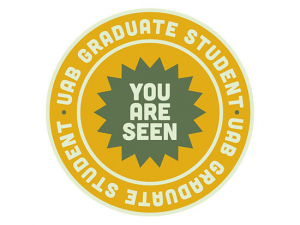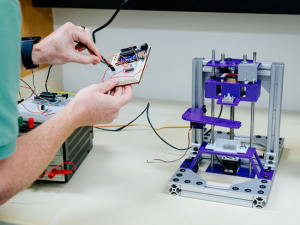 Sandeep Patlolla, a senior systems analyst in the Department of Biostatistics, saw "the immense opportunity I have in health care to contribute to research by being both an IT programmer and a data analyst/scientist."Everyone knows that data science is a hot career field. Between 2016 and 2019, data scientist was the top job in Glassdoor's annual ranking, which is based on a combination of median salary, job satisfaction and job openings. (After slipping to No. 3 in 2020, it climbed to No. 2 on the 2021 list, behind Java Developer), and the U.S. Bureau of Labor Statistics (BLS) projects job growth for all "mathematical science" careers at 27.9% through 2026.
Sandeep Patlolla, a senior systems analyst in the Department of Biostatistics, saw "the immense opportunity I have in health care to contribute to research by being both an IT programmer and a data analyst/scientist."Everyone knows that data science is a hot career field. Between 2016 and 2019, data scientist was the top job in Glassdoor's annual ranking, which is based on a combination of median salary, job satisfaction and job openings. (After slipping to No. 3 in 2020, it climbed to No. 2 on the 2021 list, behind Java Developer), and the U.S. Bureau of Labor Statistics (BLS) projects job growth for all "mathematical science" careers at 27.9% through 2026.
As the BLS notes, a master's degree is the typical entry-level education in this field. UAB's Master of Science in Data Science program, launched in fall 2018, was designed “to produce graduates with training in state-of-the-art big data theory and techniques in modeling and solving real-world problems with the most appropriate analytical techniques,” said Yuliang Zheng, Ph.D., chair of the Department of Computer Science. The program has attracted students from across the country — and the campus, including UAB employees Sandeep Patlolla and Bhadhan Joy.
Responding to the need
Patlolla and Joy haven’t just heard the hype. They see the need for data science expertise every day in their work as technologists. Back in 2017, Patlolla, a senior systems analyst in the Research Program Unit of the Department of Biostatistics, started what he called "a careful review of my current professional career." For IT professionals, "it is a must for individuals to update their skills often," Patlolla said, and he realized that "my window was closing if I wanted to learn a new major technology." After long discussions with mentors and close friends, “I realized data and its analysis is the future," he said. He also saw "the immense opportunity I have in health care to contribute to research by being both an IT programmer and a data analyst/scientist."
Patlolla is lead programmer for research projects in the Research Program Unit, "providing services such as communicating directly with principal investigators, providing custom-built HIPAA- and FDA-compliant data-entry applications, and providing IT support," he said. And he sees how the data he helps biostatisticians collect through his applications "are helpful in analyzing important information about diseases, drugs, outcomes and care patterns."
Joy, a programmer/analyst in the Department of Medicine, leads the Research Core for Department of Medicine IT. "My main job responsibilities include meeting the research, academic and administrative needs of our stakeholders," he said. That includes administering the department's REDCap system and developing "REDCap databases, plugins, hooks and external modules to meet the unique requirements of clients," and developing custom web applications and maintaining existing custom applications.
| “We are in an advantageous position to assist researchers with emerging technologies such as artificial intelligence, machine learning and deep data analytics." — Bhadhan Joy, programmer/analyst in the Department of Medicine. |
Joy’s interest in the master's in data science program was both personal and professional. He wanted to explore the field, and his unit was seeing the potential to assist more faculty in their data-driven research. The department's REDCap database hosts a large collection of research data, "and we are in an advantageous position to assist researchers with emerging technologies such as artificial intelligence, machine learning and deep data analytics," he said.
‘Interesting, challenging and extremely rewarding’
Patlolla has particularly enjoyed courses in database systems, cloud security and probability and statistics in computer science ("I struggled the most here, but I also enjoyed it the most, knowing the importance of this course in my success as a good data analyst," he said.) Courses in advanced web application development (where he already has a great deal of experience), and machine learning were also enjoyable and instructive, he said. "I graduated from the University of Alabama in Huntsville in electrical engineering with computer networking a decade ago, so I feel every course I have taken is very important and taught me something or refreshed my memory," Patlolla said.
Joy agreed, calling all the courses "interesting, challenging and extremely rewarding." One experience from his Data Visualization course from the spring 2021 semester stands out. "The final project gave us freedom to do some engaging data visualization tasks," he said. Joy chose to do a graphical analysis of the entire dataset of movie ratings and reviews by genre from the Internet Movie Data Base (IMDB). "I noticed a trend that, recently, South Indian movies have the highest IMDB ratings; however, their vote count is low," he said. He graphed the popularity of movie genres over time. "The popularity of the war genre is decreasing, the western genre was very popular in the 1960s but not anymore, and in the 1930s and 40s film noir was extremely popular, but this genre has almost died down," he said. But some genres never get old: “Drama and comedy are always the top two.”




















